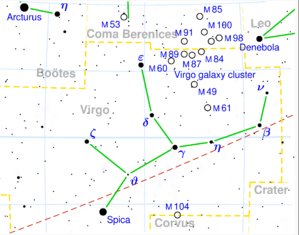|
TRANSLATIONS
The last and summary page:
I feel this is a natural point to stop. But the holes must have many more interpretations and allusions. Furthermore, the connection with the open beak of the moa is just one of several probable cross-connections between glyph types. Another such is the one between pu and viri:
Cardinal points seem to be involved in both pu and viri. Another interpretation is to see the holes as eyes, in which case the viri eyes may signify the opposite of those in pu. Both Aldebaran ('pale rose' according to Allen) and Antares ('fiery red') are red stars and once together marked the equinoxes. At that time red would have coincided with the red sun at dawn and sunset. Aldebaran once was named Bull's Eye, and to hit the centre with an arrow is also called bull's eye. The male arrow aims at the female hole. Sun is close to the earth in the morning and the evening. "... Flammarion has assigned to it the Hebrew Āleph that we have seen for Taurus, rendering it God's Eye ..." (Allen) God is like a bull in spring, full of unrestrained power. To awaken the creature it is enough to wave a red flag. Antares sounds like 'anti-Ares', the opposite of Ares (the red planet Mars - implying a kind of identity between Mars and Aldebaran), and also 'anti-Aries', the opposite of Aries (the spring zodiacal sign). "... Antares, the well-nigh universal title for this splendid star ... thought to be from αντί Άρης, 'similar to', or the 'rival of', Mars, in reference to its color ... ... the astrologers considered the Scorpion the House of that planet and that god its guardian. Thus it naturally followed the character of its constellation, - perhaps originated it, - and was always associated with eminence and activity in mankind ..." (Allen) If Antares marks the 'house' of Mars, then - south of the equator on Easter Island - it will be in harmony with how at summer solstice the house of spring sun (personified by Mars and ragi) is finished and ready for sun to inhabit. Then, after just a few days, his head is cut off (Ko Koró). Leo is 'dead' and Virgo has taken charge of the events: "Virgin august! come in thy regal state / With soft majestic grace and brow serene; / Though the fierce Lion's reign is overpast / The summer's heat is all thine own as yet, / And all untouched thy robe of living green / By the rude fingers of the northern blast. R. J. Philbrick's Virgo" (Allen) The star marking Virgo is Spica and once again we arrive at the triplet:
South of the equator the stars (including sun) arrives in the same order as north of the equator. Spica arrives before Antares. What goes down the hole at Antares? "Virgo, the Anglo-Saxon Męden, the Anglo-Norman Pulcele, the French Vierge, the Italian Virgine, Bayer's Junckfraw, and the present German Jungfrau, - in fact a universal title, - generally has been figured with the palm branch in her right hand and the spica, or ear of wheat in her left." (Allen) "... Is it not this ancient story of the Maiden of the Wheat-field that is still seen in the North English and South Scottish custom of the Kern-baby, or Kernababy, - the Corn, or Kernel, Baby, - thus described by Lang in his Custom and Myth? The last gleanings of the last field are bound up in a rude imitation of the human shape, and dressed in some rag-tags of finery. The usage has fallen into the conservative hands of children, but of old 'the Maiden' was a regular image of the harvest-goddess, which, with a sickle and sheaves in her arms, attended by a crowd of reapers, and accompanied with music, followed the last carts home to the farm. It is odd enough that the 'Maiden' should exactly translate the old Sicilian name of the daughter of Demeter. 'The Maiden' has dwindled, then. among us to the rudimentary Kernababy; but ancient Peru had her own Maiden, her Harvest Goddess." (Allen)
Maybe the glyph type hua poporo represents the 'kernababy' ('the last gleanings of the last field', 'the poor crop of breadfruits at the end of the harvest season'):
Spica (the seed of next year) comes before Antares (the planting of the seed), and therefore we should expect pu glyphs to arrive after hua poporo glyphs:
|
||||||||||||||||||||||||||||||||||||||






